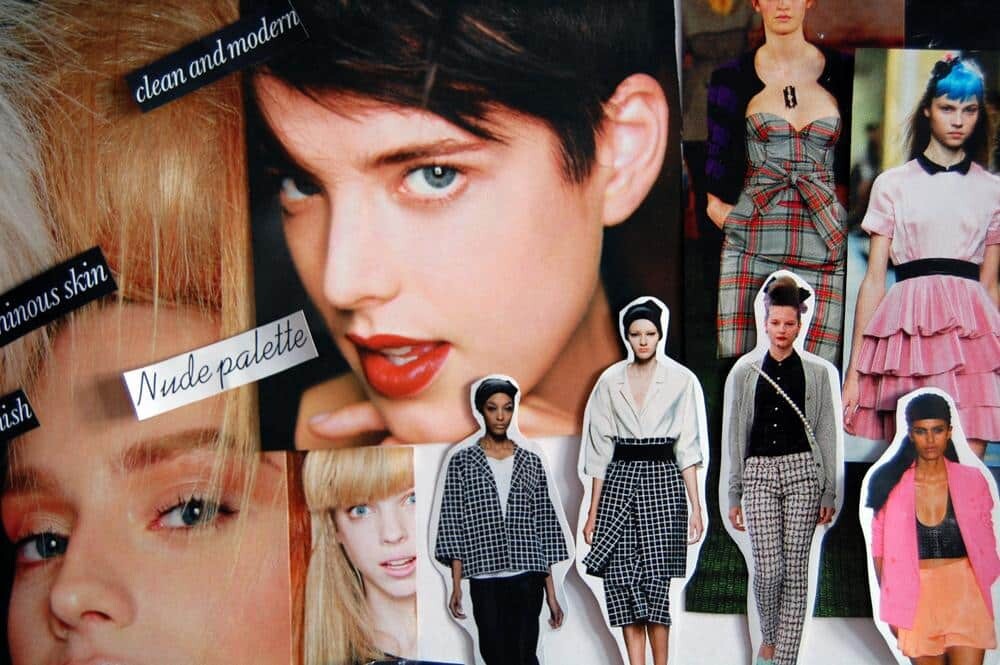Last month I wrote an article on Thoughtful Consumption – what it is, and why it’s worth thinking about. Now, here’s how to go about actually putting it into practice. Simply ask yourself the following four questions when you see something that you think you’d like to buy. Here we go!
Do I need it?
Sometimes it can feel difficult to differentiate between wants and needs. You see an exquisite dress on a shop window mannequin and gush, “Oh, I need that!” Of course, you don’t need it – you just want it. (NB: I’m going to leave fundamental human needs such as food and shelter to one side for the sake of this article, as I’m assuming that if you have Internet access, you’re fortunate enough to have those essential areas covered!) However, where clothes are concerned, you may very well need a new pair of ballet flats, if your current pair have become scuffed to bits and you have no smart footwear for work. Essential items such as a little black dress, pair of court shoes and everyday handbag can all be considered fashion “needs” – essentially, anything you already own (and wear a lot) which needs replacing, or something that you inherently know will instantly become a key item in your wardrobe. If you come across something in a neutral or signature shade, which fits well and is made from a quality fabric, then feel free to go ahead and add it to your shopping list.
Do I really want it?
So, you’ve realised that you don’t necessarily need that floral pink headscarf, but you’d like to own it all the same. But before you reach for the plastic, stop and think about whether you really, really want that dress/bag/pair of shoes. When we fall in love with a beautiful garment on sight, it’s hard to judge whether or not that item would be a valuable purchase. It’s also far too easy to overlook little flaws – visible stitching, a not-quite-right colour, or an unwanted decoration. Look over the garment in minute detail. Will it work with your existing wardrobe? Is the colour right; the length; the fit? Print out a picture of the item in question, or find an image of it in a magazine, and stick it on your wardrobe door or above your desk, somewhere that you’ll see it everyday. Pull an image of it into Polyvore and see how it could be styled up. If you still want the item in question after thinking about it for 30 days, then give yourself permission to buy it. If you’ve changed your mind about how wonderful it is, then you’ve saved yourself from making a shopping slip-up! Yay!
Is it worth it?
I’d like to introduce you to a neat little concept known as CPW – cost per wear! What is cost per wear, exactly? I’m not the most mathematical of people and this can be a little tricky to explain, so here are some imaginary examples to illustrate my point!
Dolly saw a dress on the high street that, whilst not exceptionally well made or particularly flattering, was an absolute steal at £16, and in that summer’s popular floral print. Dolly bought the dress and wore it four times that summer – to a garden party, an evening in a pub garden, and a couple of barbecues. By the end of the summer, though, the trend for floral prints had passed, the fabric of the dress was much too thin for winter, and the colour was already starting to fade. The dress ended up in Dolly’s local charity shop.
A dress bought for £16, worn 4 times = cost per wear of £4
Duke found hisdream leather jacket in an independent boutique that imported designer clothes from all over the world. The jacket was black, beautifully tailored and fit him perfectly. He instinctively knew that it was the kind of jacket that would only look better with age. Duke decided that the asking price of £150 was more than reasonable for such a classic, high quality jacket. He bought it, put it on straight away (it seemed to look good with everything he owned), and wore it at least once a week every year, for 3 years.
A leather jacket bought for £150, worn 150 times = cost per wear of £1
Daisy was going to a party, and needed an evening bag. She picked one up from a budget clothing shop at the corner of her road. It was hot pink, made from poly-something and had a long strap. The zip was a little stiff, but she decided that at £10, the bag was a bargain. She bought it and took it out with her that evening. After opening and closing the bag multiple times – to retrieve money, find her comb and give her hair a quick brush, or pull out her phone and send text messages to her friends – the zip broke and could not be forced shut. The next morning, Daisy decided that it wasn’t worth fitting a new zip on such a cheap bag, so she threw it away.
A bag bought for £10, used once = cost per wear of £10
Essentially,cost per wear is about calculating the true value of an item of clothing. Of course, until you’ve bought something, you never really know how much you’ll wear it, but you can make a fair guess. You may baulk at the price of a leather jacket, yet if you consider cost per wear, it could be a better investment than the high street dress you thought was a bargain. If you need convincing further, Nubby Twiglet has written a helpful article on cost per wear, in which she uses pieces from her own wardrobe to explain the formula:
price ÷ times worn = cost per wear!
Can I afford it?
In this day and age, with banks throwing themselves at our feet to offer us immediate credit, it can seem a silly question to ask ourselves whether or not we can afford something. I mean, of course we can afford it! All it takes is the swipe of a MasterCard and the designer dress that we’ve been lusting after instantly belongs to us. Believe me when I tell you that this is a bad way to live! If any particular accessory or item of clothing costs more than you can afford to spend in one lump sum, then save up! Get a piggy bank and empty your loose change into it every time you open your purse; forgo your daily cappuccino and set aside the cash to your shoe fund; take on a little extra work or sell your talents and expertise to earn some money on the side. Whenever you reach to buy a luxury or non-essential item, think: “Would I rather have this smoothie/magazine/lipstick, or would I rather have an elegant pure wool coat?” The choice is yours! If it still doesn’t seem affordable and you can bear to wait, try and hang on for the seasonal sales. Also remember to keep an eye out for promotions that are running in-store, and discount codes if you’re shopping online. eBay is brilliant for unworn, new with defects or “gently used” goods that sellers are willing to give up for a fraction of the original price. eBay should also be your first stop if your longed-for garment has already sold out, or is from a few seasons ago. And if the astronomical price tag of your ideal designer tote is still just too much to believe, and no amount of scrimping and saving can guarantee it will be yours, why not look around for a close alternative? Generally speaking, many shops are “influenced” by whatever’s happening on the catwalk, so it’s likely that you could find an almost identical copy of your dream purchase. Try ShopStyle!
Conclusion
You might be wondering if shopping this way will really make an overall difference to your style. I can wholeheartedly say that the answer is yes! Trust me, shopping this way will change your life for the better. Quality always wins over quantity. Of course, changing the way you shop is like changing any other habit – it’s difficult, and it takes time. Whether you recently went on an impromptu splurge and immediately regreted it, or you’ve been shopping this way since you were old enough to buy your own clothes makes no difference. Once you get started on the path of being a thoughtful consumer, you will soon wonder why you ever bothered with cheap, throwaway fashion. I promise!
Can you think of any other ways to practice thoughtful consumption?


